Key takeaways:
- Sausage protein types significantly affect flavor and texture, with options ranging from traditional meats like pork and beef to leaner alternatives like chicken and plant-based sources.
- Sausage protein is high in essential nutrients, beneficial for muscle building and recovery, while the choice of lean varieties helps maintain a healthier diet.
- Diverse cooking methods and exploring different sausage types can enhance flavor while catering to various dietary preferences, making it easy to incorporate sausage into meals creatively.

Understanding sausage protein types
When it comes to sausage, the protein types can vary widely, influencing both flavor and texture. I remember my first time tasting a homemade pork sausage; the richness of the protein made it melt in my mouth. Isn’t it fascinating how the type of meat impacts the overall experience of the dish?
Beef sausage, for example, delivers a hearty taste, while chicken sausage provides a leaner alternative that doesn’t compromise on flavor. I’ve served chicken sausage at dinner parties, and guests often ask what makes it so delightful. It’s that blend of protein and spices that truly brings it to life and sparks curiosity about the different types available.
Don’t overlook the role of plant-based proteins in sausage alternatives, either. I once tried a lentil-based sausage, and it opened my eyes to how versatile protein sources can be. Have you ever found yourself surprised by a meat substitute? It’s this exploratory journey that reveals the incredible diversity within the world of sausage proteins.
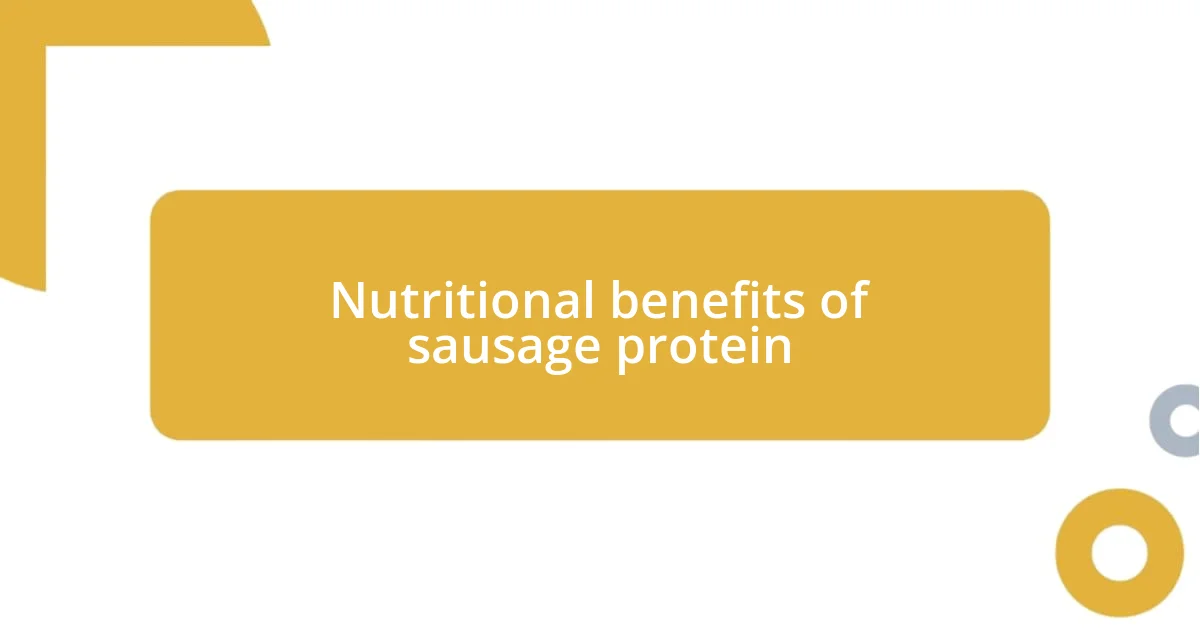
Nutritional benefits of sausage protein
Sausage protein offers impressive nutritional benefits that often go overlooked. For instance, it is typically high in protein content, which helps in muscle building and repair. I recall finishing a tough workout and enjoying a sausage-stuffed bell pepper; it was satisfying to know I was fueling my body with protein that would assist in recovery.
Moreover, many sausages are rich in essential vitamins and minerals such as B vitamins, iron, and zinc. B vitamins, like B12, help with energy production—something I truly appreciate on busy days when I need that extra bounce in my step. The last time I cooked up a spicy sausage pasta, I felt rejuvenated after enjoying the savory dish, aware of the nutritional benefits powering me through the day.
On another note, the fat content in sausage can vary, and opting for leaner varieties can provide a healthier choice without sacrificing taste. I’ve often experimented with turkey and chicken sausages in my recipes, and I find that they can be as flavorful as their pork counterparts. Have you tried different types of sausage? The experience can shift your perspective on how nutritious and delicious sausage protein can be.
| Nutritional Aspect | Benefits |
|---|---|
| High Protein Content | Supports muscle building and repair |
| B Vitamins | Boosts energy production |
| Iron | Essential for healthy blood cells |
| Zinc | Supports immune function and metabolism |
| Varied Fat Content | Lean options offer healthier choices |
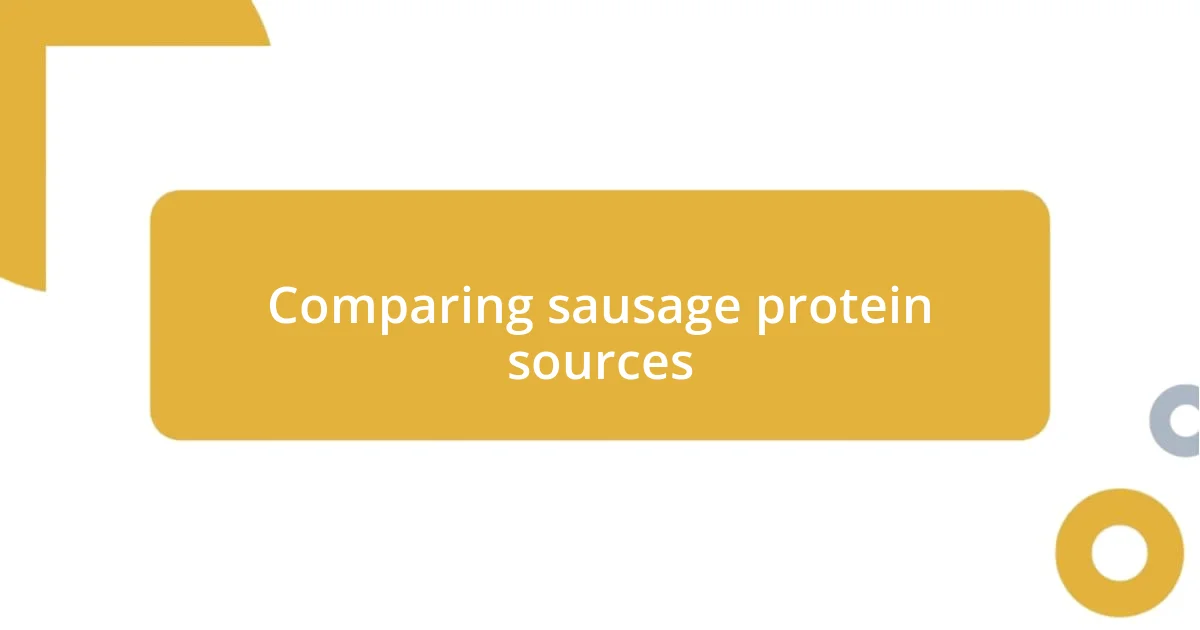
Comparing sausage protein sources
Sausage protein sources can vary not just in flavor but also in nutritional value, shaping how we enjoy them. I remember my first bite of spicy Italian sausage; the robust flavor struck me, but I later discovered it was also higher in fat than other options. This encouraged me to experiment with different meats, leading me to a delicious duck sausage that not only surprised my taste buds but also provided a unique protein profile.
When considering sausage protein sources, here are some popular options and their characteristics:
- Pork: Rich, flavorful, and often higher in fat; a classic choice for many recipes.
- Beef: Hearty and robust; great for chili or smoky sausage dishes.
- Chicken: Lean and versatile; it’s often a go-to for health-conscious meals.
- Turkey: A lean alternative that can still deliver satisfying flavors; I often use it for breakfast sausages.
- Plant-based: Includes lentils, mushrooms, and soy; they can mimic textures and flavors, opening up exciting culinary possibilities. I was amazed at how well a beet and quinoa sausage could taste, making me rethink meat-based dishes.
The variety of protein sources invites culinary experimentation and allows for a more diverse diet.
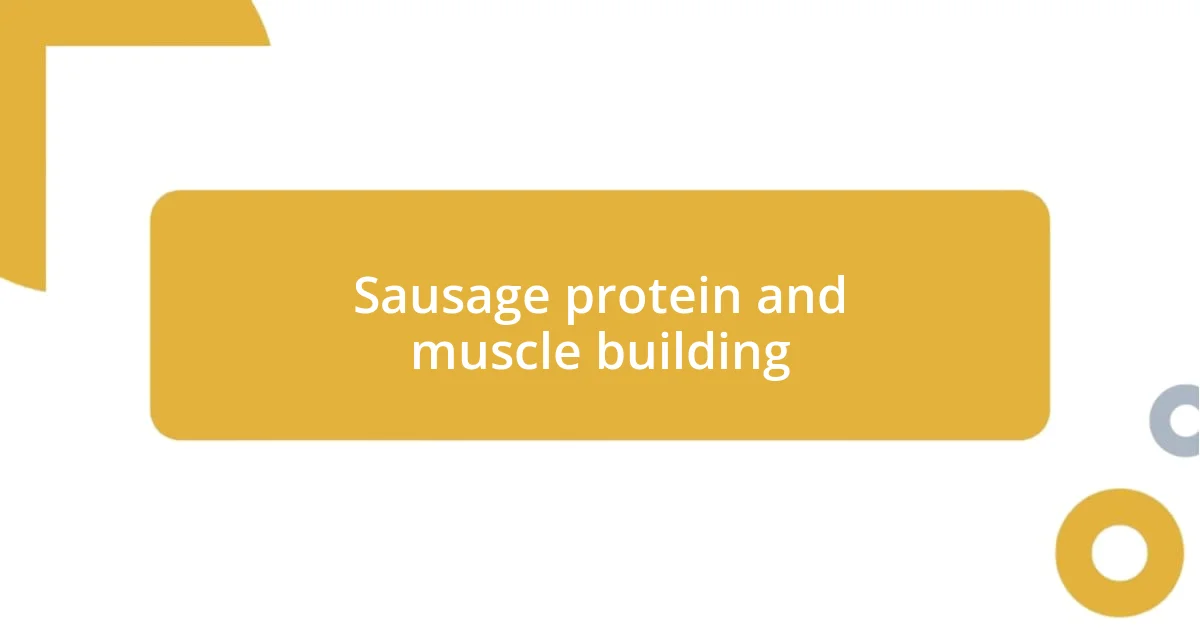
Sausage protein and muscle building
Sausage protein can be a cornerstone for muscle building, especially if you choose varieties that emphasize leaner meats. I found that grabbing a chicken sausage after an intense workout gave me not only the protein boost I needed but also a tasty treat that made my recovery feel enjoyable. Have you ever noticed how a well-cooked sausage can be both fulfilling and supportive of your fitness goals?
The key here lies in the protein quality and the amino acids it delivers. I often experiment with different seasoning blends, and the right spices can truly elevate a basic sausage. Recently, I made a herbed turkey sausage that packed a punch in flavor and nutrition. It reminded me how creative we can be with protein sources, making muscle-building meals exciting rather than mundane.
Balancing protein intake while cutting down unhealthy fats can be a delicate dance, but I believe opting for quality sausages makes it easier. The last time I cooked a smoked sausage, I carefully selected one that was lower in fat but rich in flavor, and it didn’t disappoint! Can you recall a moment when making a healthier choice made your meal unforgettable? It’s those small adjustments that not only contribute to muscle repair but also make every bite worth savoring.
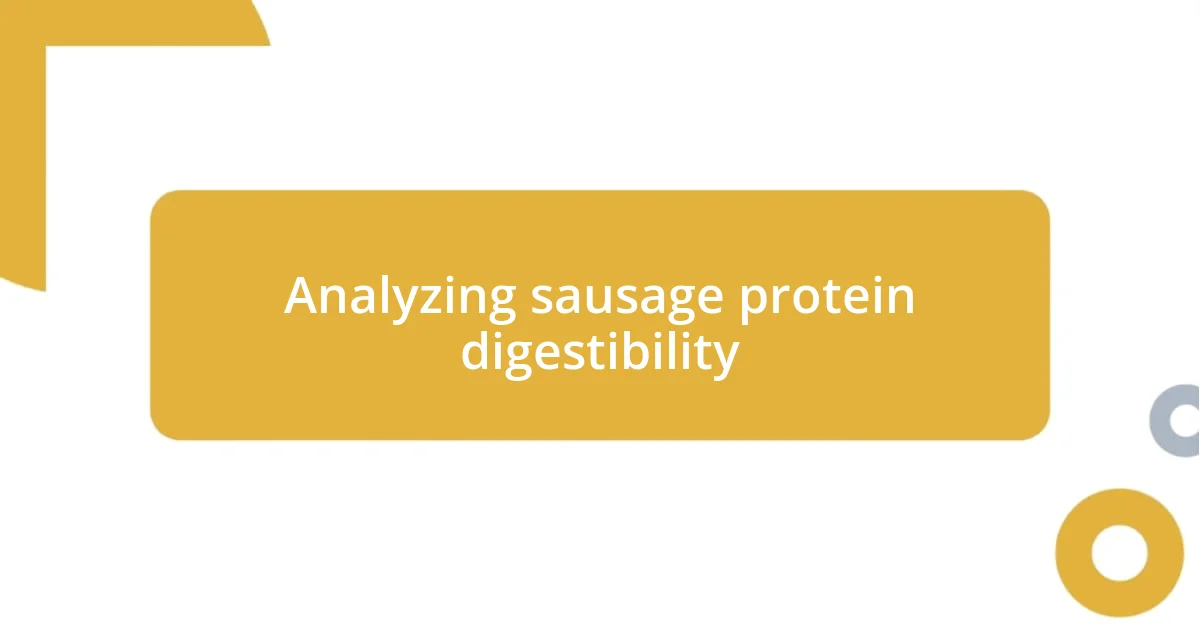
Analyzing sausage protein digestibility
Analyzing sausage protein digestibility reveals some interesting nuances that can affect our perceptions of this beloved food. I recall a dinner party where I prepared a variety of sausages; the difference in how we digested each one was fascinating. Those made of leaner meats, like turkey, didn’t sit as heavily in my stomach compared to the richer, pork-based ones, showcasing how fat content can play a significant role in digestibility.
The amino acid profile found in sausages also impacts their digestibility. For instance, I’ve noticed that chicken sausage, packed with essential amino acids, tends to be more easily absorbed by my body post-workout. It’s remarkable how certain sausages can aid in muscle recovery more efficiently than others, thanks to their digestibility. Have you ever considered how the type of protein you consume affects not just your energy but also your overall well-being?
Moreover, the method of preparation can significantly influence how well our bodies digest sausage protein. I learned this firsthand when grilling sausages versus cooking them in a pan. Grilling seemed to enhance flavor without adding excess fats, resulting in a lighter meal that was still satisfying. I often ponder the connection between cooking methods and digestion – does a delicious meal truly mean the same if it leaves us feeling heavy afterward? The exploration of different cooking techniques has opened my eyes, making me appreciate how our choices shape not just flavor, but also our digestive experiences.
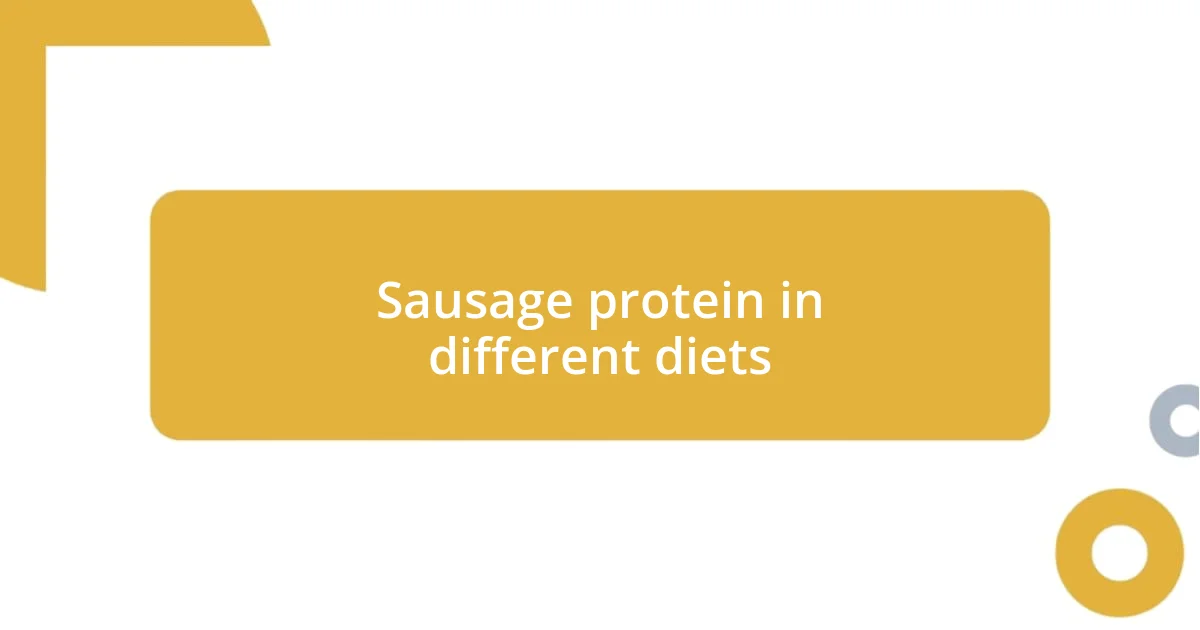
Sausage protein in different diets
Sausage protein can serve various dietary needs, whether you’re a meat lover or a health-conscious eater. For instance, when I decided to switch to a plant-based diet, I was pleasantly surprised by the variety of vegan sausages available. I remember making a hearty breakfast with a vegan sausage that not only satisfied my craving but also fueled my morning jog. Have you ever found a replacement that exceeded your expectations?
In my experience, integrating different types of sausages into my meals has become an exciting challenge. Recently, I experimented with a low-carb diet and discovered how some sausages, particularly those infused with herbs, complemented my meals perfectly without bumping up my carb intake. The explosion of flavors made each bite feel indulgent. Have you found any surprising food pairings that worked wonders for your dietary preferences?
Navigating the world of sausages within different diets has broadened my culinary horizons. I’ll never forget the dinner I hosted where I showcased chicken, turkey, and veggie sausages, each paired with unique side dishes. It felt great to see how everyone found something they loved. The versatility of sausage proteins can unite different dietary preferences at the table – how does your favorite sausage bring people together?

Incorporating sausage protein in meals
Incorporating sausage protein into meals is easier than you might think. Last month, I celebrated a cozy family gathering by crafting a savory pasta dish with roasted vegetables and spicy Italian sausage. The flavors melded beautifully, and everyone at the table found it both satisfying and energizing. It got me wondering, how can a single ingredient elevate a whole meal?
I’ve also found that breakfast is an excellent opportunity to dive into sausage protein. A weekend favorite of mine is a breakfast burrito loaded with scrambled eggs, black beans, and a slice of kielbasa. That mix packs a punch, setting a lively tone for the day. Have you ever tried a breakfast combo that made you look forward to your mornings even more?
When it comes to incorporating sausage protein, don’t shy away from experimenting with different cuisines. Recently, I made a Thai-inspired dish using lemongrass sausage, which turned a simple stir-fry into a festival of bold flavors. It truly transformed the ordinary into something extraordinary. What has been your most adventurous cooking experience with sausage?















